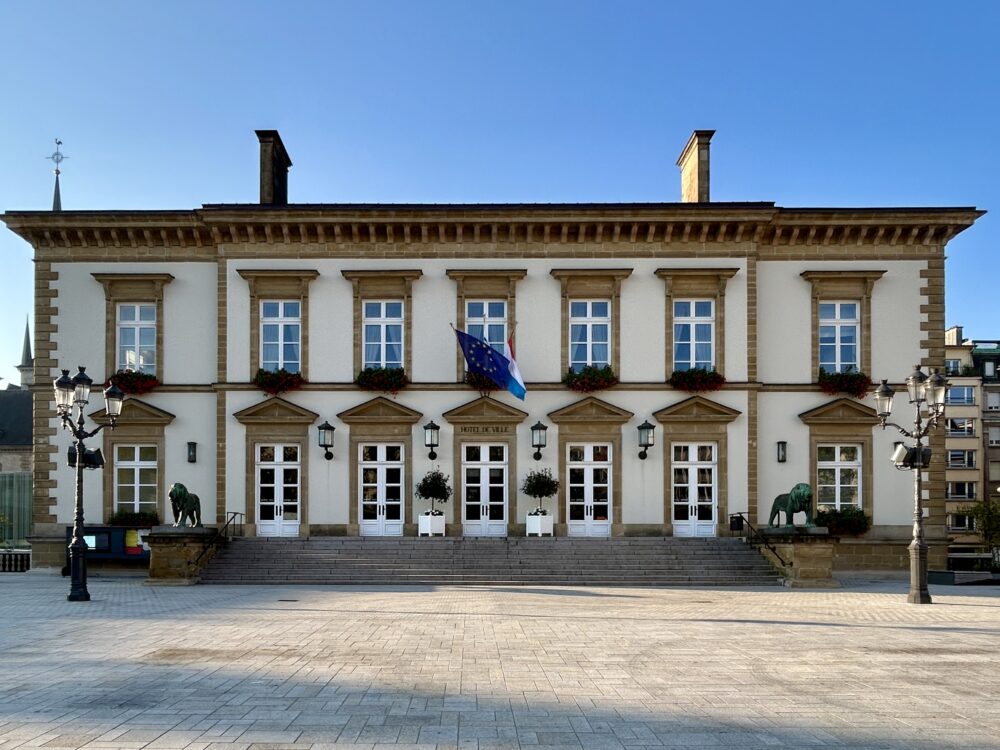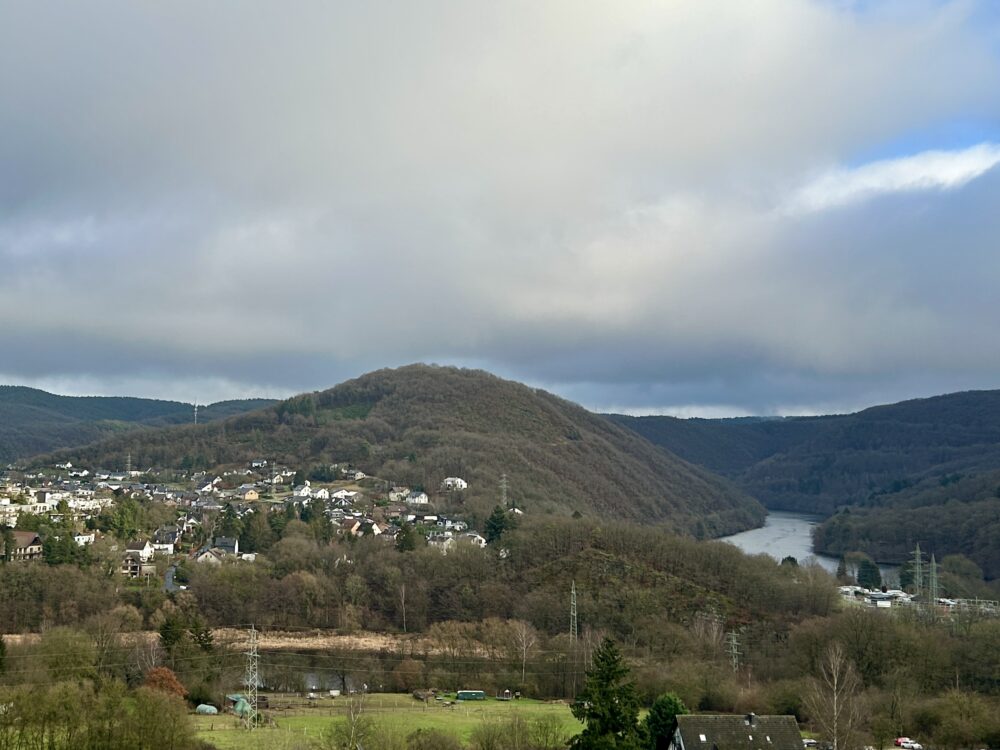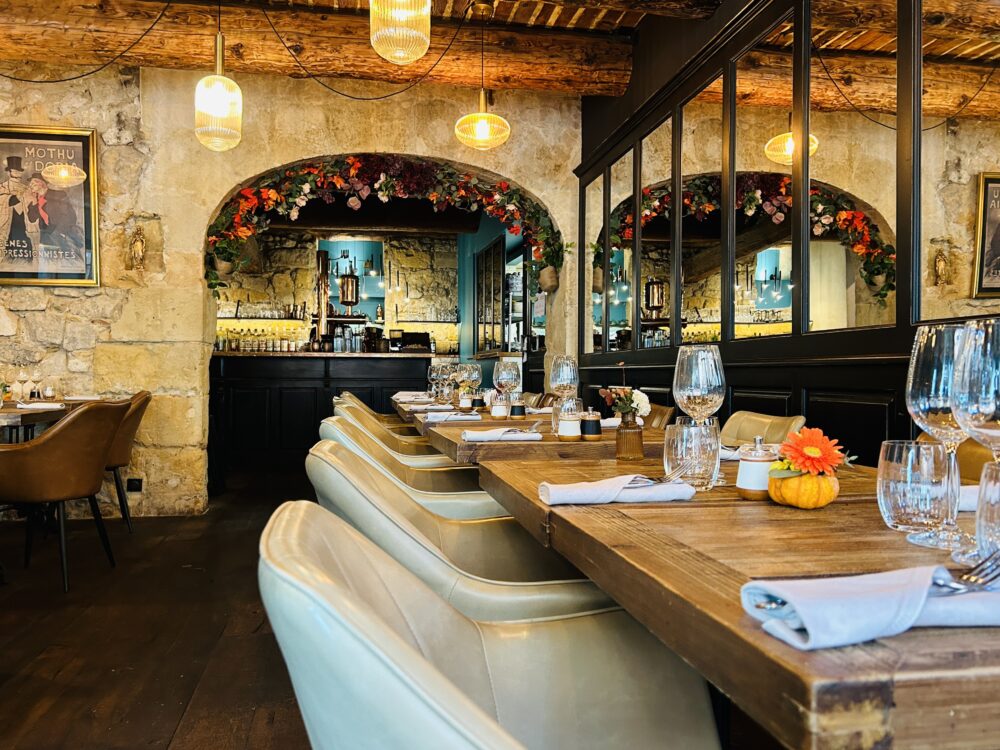The City Hall of Luxembourg City, known locally as Hôtel de Ville, stands as a testament to the city’s rich history and architectural grandeur. Located in the heart of the city on Place Guillaume II, this historic building has witnessed centuries of change and remains a symbol of civic pride.
Architectural Beauty and Design
Constructed between 1830 and 1838, the City Hall was designed in the Neo-Classical style, a popular architectural trend of the time. The building’s façade is characterised by its symmetrical design and elegant stonework, which were primarily sourced from the former Franciscan monastery that once stood on the site.
The entrance is marked by a series of imposing steps leading up to a portico supported by Doric columns, creating a sense of grandeur and formality. Above the entrance, a triangular pediment adorned with intricate sculptures adds to the building’s majestic appearance. The large windows are framed with decorative mouldings, allowing natural light to flood the interior spaces, highlighting the building’s spacious and airy design.
Inside, the City Hall boasts beautifully decorated rooms, including the council chamber and the wedding room, which feature ornate ceilings, chandeliers, and period furnishings.
Historical Significance
The City Hall has played a central role in Luxembourg City’s administrative and political life since its completion. It houses the offices of the mayor and aldermen, as well as the main meeting rooms for the municipal council. Over the years, it has been the site of numerous important events and decisions that have shaped the city’s development.
During the Nazi occupation of Luxembourg in World War II, the City Hall, like many other buildings in the city, was repurposed by the occupying forces. The Nazis used it as an administrative center, and it became a symbol of their control over the city. Despite this dark period, the building survived the war largely intact and continued to serve its original purpose after the liberation of Luxembourg in 1944.
Today, the City Hall stands as a functional administrative building and a monument to Luxembourg City’s. Its architectural beauty and historical significance make it a must-visit landmark.
#LuxembourgCity #HistoricArchitecture #CityHall #LuxembourgHistory #ArchitecturalBeauty













